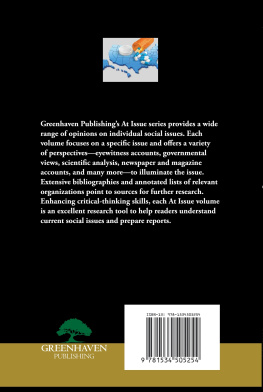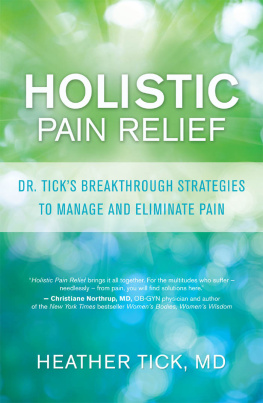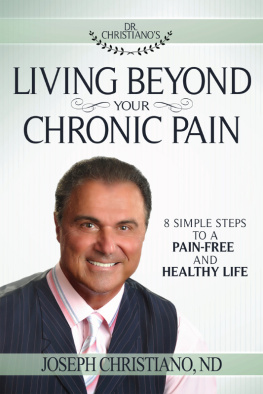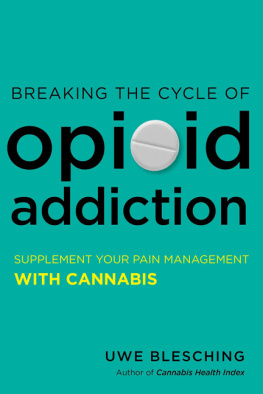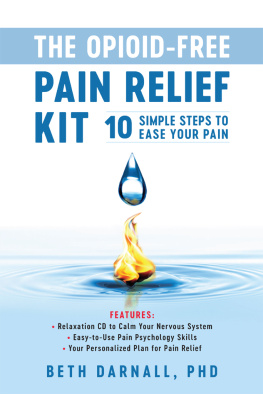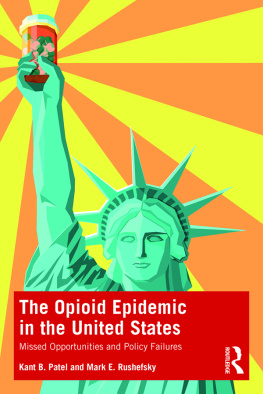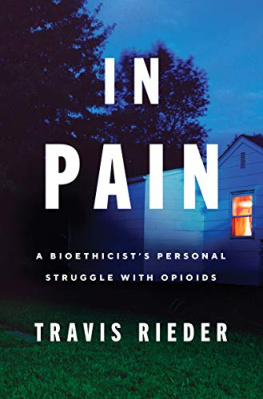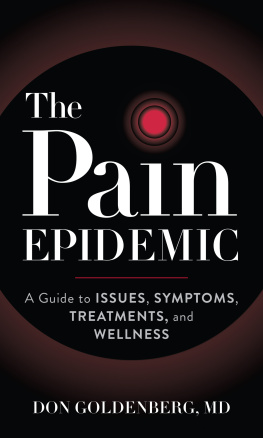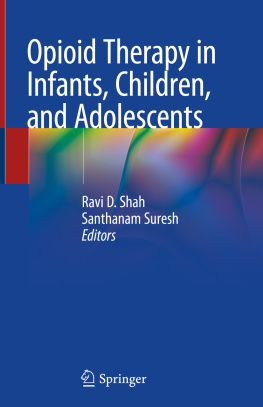The Right to Pain Relief and Other Deep Roots of the Opioid Epidemic

Oxford University Press is a department of the University of Oxford. It furthers the Universitys objective of excellence in research, scholarship, and education by publishing worldwide. Oxford is a registered trade mark of Oxford University Press in the UK and certain other countries.
Published in the United States of America by Oxford University Press
198 Madison Avenue, New York, NY 10016, United States of America.
Oxford University Press 2023
All rights reserved. No part of this publication may be reproduced, stored in a retrieval system, or transmitted, in any form or by any means, without the prior permission in writing of Oxford University Press, or as expressly permitted by law, by license, or under terms agreed with the appropriate reproduction rights organization. Inquiries concerning reproduction outside the scope of the above should be sent to the Rights Department, Oxford University Press, at the address above.
You must not circulate this work in any other form and you must impose this same condition on any acquirer.
Library of Congress Cataloging-in-Publication Data
Names: Sullivan, Mark D. (Mark Daniel), 1955 author. | Ballantyne, Jane C., 1948 author.
Title: The right to pain relief and other deep roots of the opioid epidemic /
Mark D. Sullivan and Jane C. Ballantyne.
Description: New York, NY : Oxford University Press, 2023. |
Includes bibliographical references and index. |
Identifiers: LCCN 2022038835 (print) | LCCN 2022038836 (ebook) |
ISBN 9780197615720 (paperback) | ISBN 9780197615744 (epub) | ISBN 9780197615751
Subjects: MESH: Chronic Paindrug therapy | Opioid Epidemicetiology | Patient Rights |
Social Cognition | United States
Classification: LCC RB127.5.C48 (print) | LCC RB127.5.C48 (ebook) |
NLM WL 704.6 | DDC 616/.0472dc23/eng/20220906
LC record available at https://lccn.loc.gov/2022038835
LC ebook record available at https://lccn.loc.gov/2022038836
DOI: 10.1093/med/9780197615720.001.0001
This material is not intended to be, and should not be considered, a substitute for medical or other professional advice. Treatment for the conditions described in this material is highly dependent on the individual circumstances. And, while this material is designed to offer accurate information with respect to the subject matter covered and to be current as of the time it was written, research and knowledge about medical and health issues is constantly evolving and dose schedules for medications are being revised continually, with new side effects recognized and accounted for regularly. Readers must therefore always check the product information and clinical procedures with the most up-to-date published product information and data sheets provided by the manufacturers and the most recent codes of conduct and safety regulation. The publisher and the authors make no representations or warranties to readers, express or implied, as to the accuracy or completeness of this material. Without limiting the foregoing, the publisher and the authors make no representations or warranties as to the accuracy or efficacy of the drug dosages mentioned in the material. The authors and the publisher do not accept, and expressly disclaim, any responsibility for any liability, loss, or risk that may be claimed or incurred as a consequence of the use and/or application of any of the contents of this material.
For my wonderful and patient family,
Linda, Lena, and Eli
For my parents who took me where I came, and my husband Stuart who keeps me there
Contents
We met in 2009, when Mark invited Jane to speak at a University of Washington ethics symposium, Relief of Pain and Suffering: Too Little or Too Much?, billed as an assembly of researchers, clinicians, historians, and philosophers to discuss the goals, limits, and unintended consequence of efforts to relieve pain and suffering. This was near the peak of the U.S. prescription opioid epidemic, and we were there to consider what went wrong. How could righteous efforts to reduce pain and suffering have turned into an epidemic that had caused so much suffering?
Over the years, we have become close friends and colleagues, written many papers together in medical journals, and spent countless hours discussing the ideas you will find in this book. As we write this in 2021, the opioid epidemic rolls on. In the United States alone, it has cost us 500,000 lives and $1 trillion. The COVID pandemic has not ended the opioid epidemic. Drug overdoses have surged during the pandemic, increasing 30% from 2019 to 2020, up to a total of over 93,000. Overdose deaths from opioids (largely fentanyl) totaled 69,710 in 2020.
Multiple accounts of the origins of this American tragedy have been published. Most of these focus on greedy and duplicitous pharmaceutical companies, flawed drug approval and regulatory procedures, and inadequate scientific testing. Some have focused on the social despair in which opioid use and abuse took root. Our account is different: It will focus on pain rather than opioids themselves.
When patients seek medical help for chronic physical pain, they get prodded and poked, maybe sent for an X-ray or scan, receive a diagnosis, and obtain treatment that could be medication, or injection, or manipulation, or surgery, or physical therapy. All of this can help. Sometimes it can take the physical pain away altogether. Often, however, treatment directed at the painful body part produces only temporary relief. It is the physical pain that will not go away that bothers all of us, because it is this pain that keeps coming back to the clinic, disrupts peoples lives, shows up in alarming epidemiological data, and costs society both money and disability. Yet all of this, and the treatment that we aim at it, rarely addresses the personal problem of pain, because it is addressing an impersonal pain signal. This pain signal has been called nociception, or nociceptive inputterms we will use frequently throughout this book. But nociceptive input does not become pain until it has been processed by the persons brain. What the person feels or perceives depends on the person, and can vary dramatically between people and their circumstances, to the extent that for the same signal there could be no pain or terrible pain, or anything in between. This is not a new insight. It has been addressed using behavioral and rehabilitative treatment approaches at least since the inception of pain clinics in the 1960s. But these approaches have been drowned out by medical pain treatments that produce more immediate pain relief. However, these treatments generally leave the person out of the pain treatment process. And when the persons role in the production, maintenance, and termination of pain is forgotten, things can go wrong.
We entered the pain field in its heyday. The idea that pain was not merely a symptom but also its own disease that should have its own specialists and clinics grew out of the birth of anesthesia, attributed to its first public demonstration in 1846. By the 1960s, pain-abolishing treatments were being offered to people with chronic pain. By the 1980s, when we received our specialty training, pain clinics abounded, and there was a belief that new technologies, new techniques, new understanding of pain mechanisms, new medications, and further research would be able to deliver pain relief like we had never seen before. They were exciting times, and pain clinicians were on a mission. Forty years later, however, our high hopes are in tatters. The unfortunate truth is that we have not found better treatments that lower the population burden of chronic pain. In fact, instead of solving the chronic pain problem, it has gotten worse.



